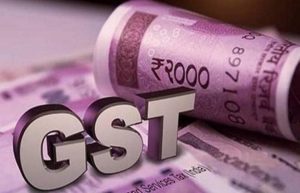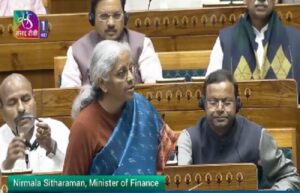New Delhi, 31 January: Finance Minister Nirmala Sitharaman laid the Economic Survey for the financial year 2019-20 on Friday before the General Budget was presented. This survey report states that the GDP growth rate will be between 6 and 6.5 percent in FY 2020-21.
Apart from this, figures from inflation to industrial production and current account deficit have also been released. At the same time, the survey report also mentioned about employment and import-export. In such a situation, we tell you about the 15 main points of the Economic Survey Report.
The Consumer Price Index (CPI) inflation rose from 3.7 per cent in FY 2018-19 (April to December, 2018) to 4.1 per cent in 2019-20 (April to December, 2019). At the same time, the wholesale price index (WPI) inflation fell from 4.7 per cent in FY 2018-19 (April to December, 2018) to 1.5 per cent in FY 2019-20 (April to December, 2019).
According to the Index of Industrial Production (IIP), the industrial sector registered a growth of 0.6 percent during 2019-20 (April-November) as compared to 5 percent for the financial year 2018-19 (April-November).
The survey report said that in 2019, public sector banks lost an average of 23 paise per rupee per investment, while non-public sector banks made a profit of 9.6 paise.
Current account deficit reduced to 1.5% of GDP in the first half of FY 2019-20, as against 2.1% in FY 2018-19.
Economic survey states that imports have decreased compared to exports in the first half of FY 2019-20.
– India’s Balance of Payments (BoP) situation has also improved. It had $ 412.9 billion foreign exchange reserves in March 2019, while it increased to $ 433.7 billion at the end of September, 2019.
The survey said that the current account deficit (CAD) fell from 2.1 per cent of GDP in 2018-19 to 1.5 per cent in the first half of 2019-20.
The Economic Survey also stated that the foreign exchange reserves stood at $ 461.2 billion as of January 10, 2020.
– In 2019, global trade is projected to grow at a rate of 1.0 per cent, in line with the projected growth of 2.9 per cent in global production, while in 2017 it reached a peak of 5.7 per cent. However, it is expected to recover to 2.9 per cent in 2020 with recovery in global economic activity.
Indian Railways carried 120 million tonnes of freight during the financial year 2018-19 and became the fourth largest freight carrier. Similarly, the railway has become the world’s largest passenger carrier with 840 million passengers.
The Economic Survey states that India’s top five trading partners are the United States, China, United Arab Emirates (UAE), Saudi Arabia and Hong Kong.
According to the survey, the top export products include petroleum products, precious stones, drug prescriptions and organic, gold and other precious metals. The largest export destinations in the fiscal year 2019-20 (April-November) are the United States, followed by the United Arab Emirates (UAE), China and Hong Kong.
According to the survey, the top import products are raw petroleum, gold, petroleum products, coal, coke and briquettes. India’s maximum imports will continue from China, followed by the US, UAE and Saudi Arabia.
Cash position was weak in the first two months of the financial year 2019-20 but after some time it became convenient.
It has been said in the Economic Survey that 10 sectors have been a major contributor to the pace of economic growth in the second half of FY 2019-20.





